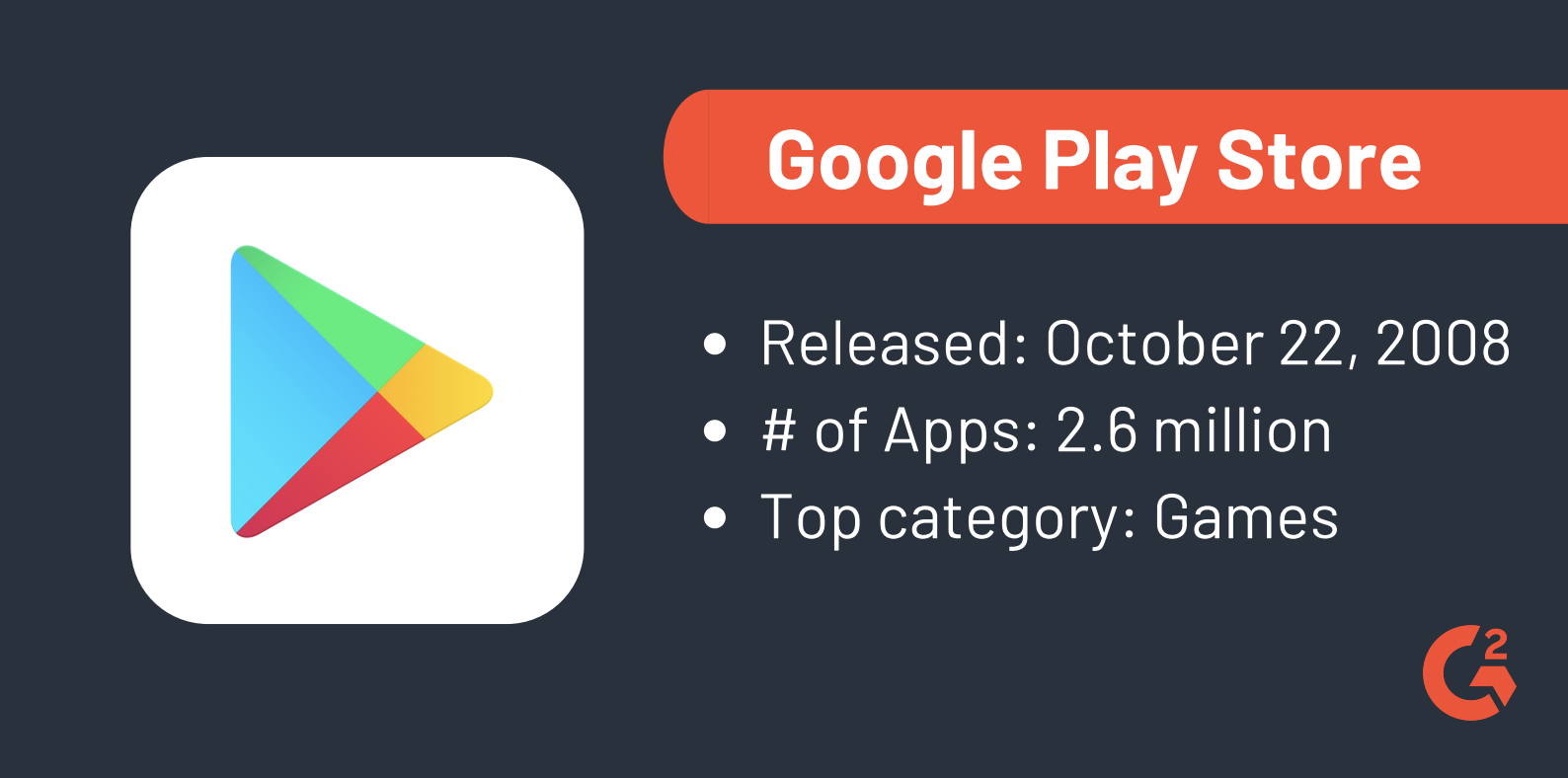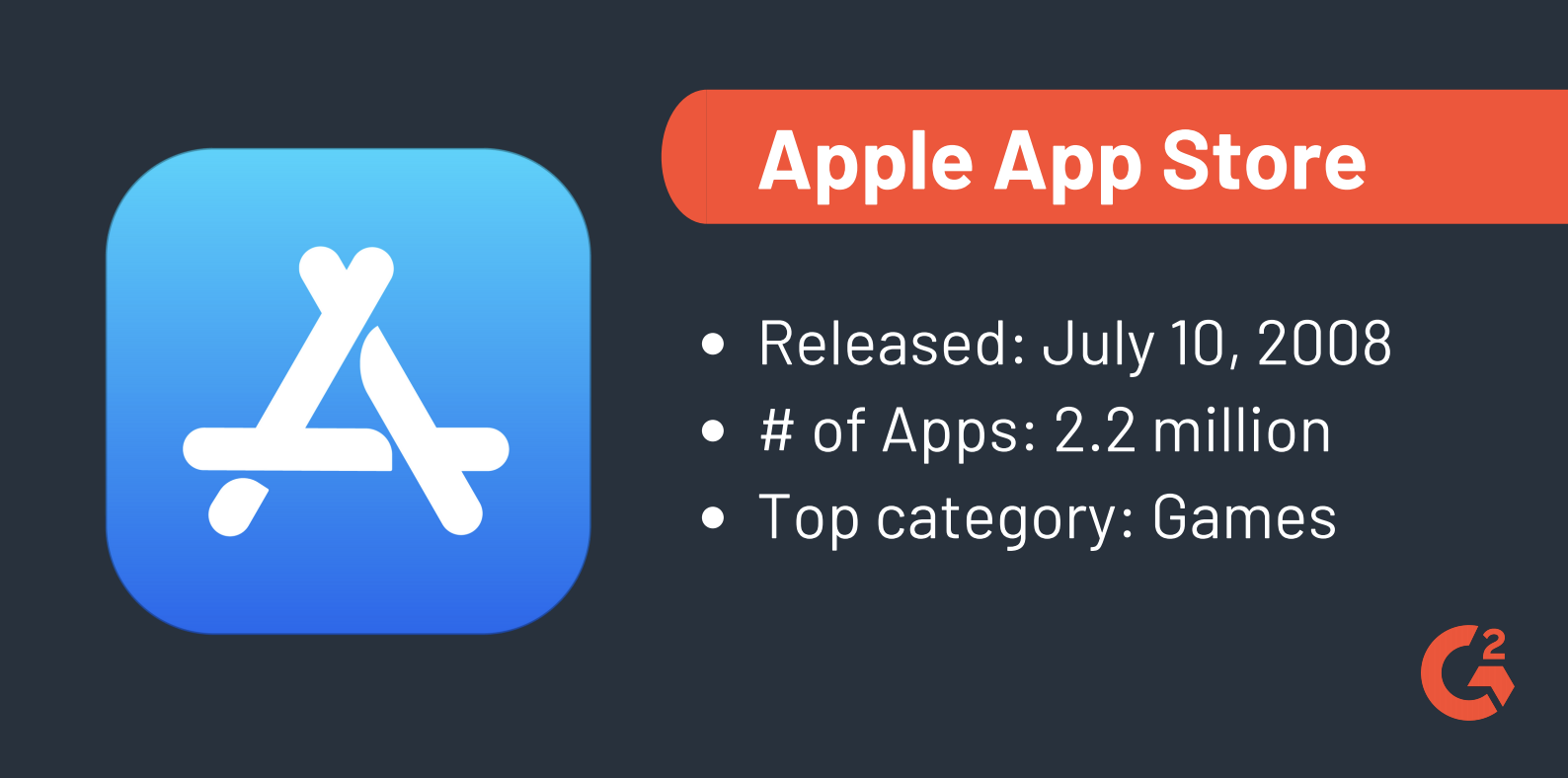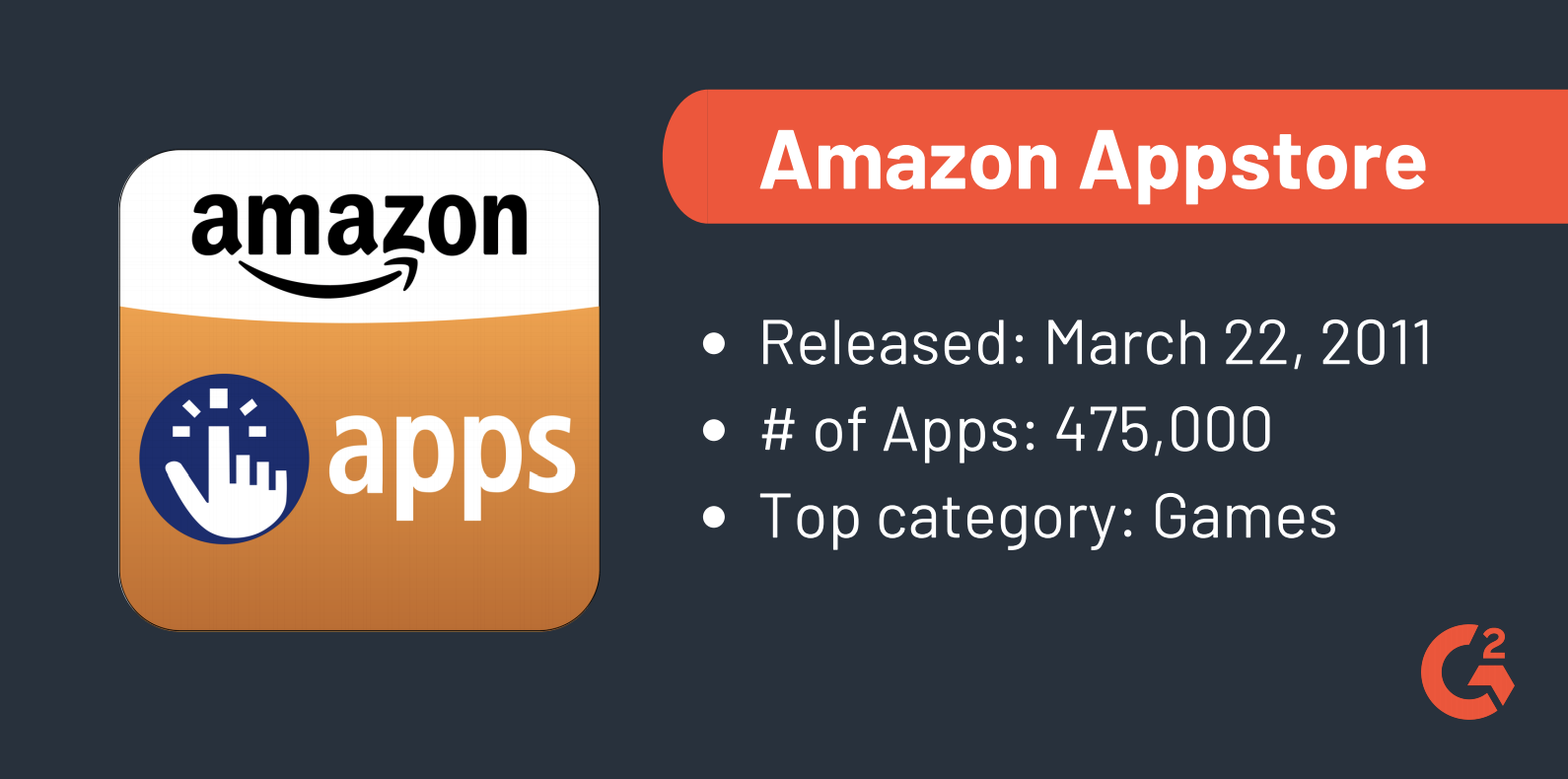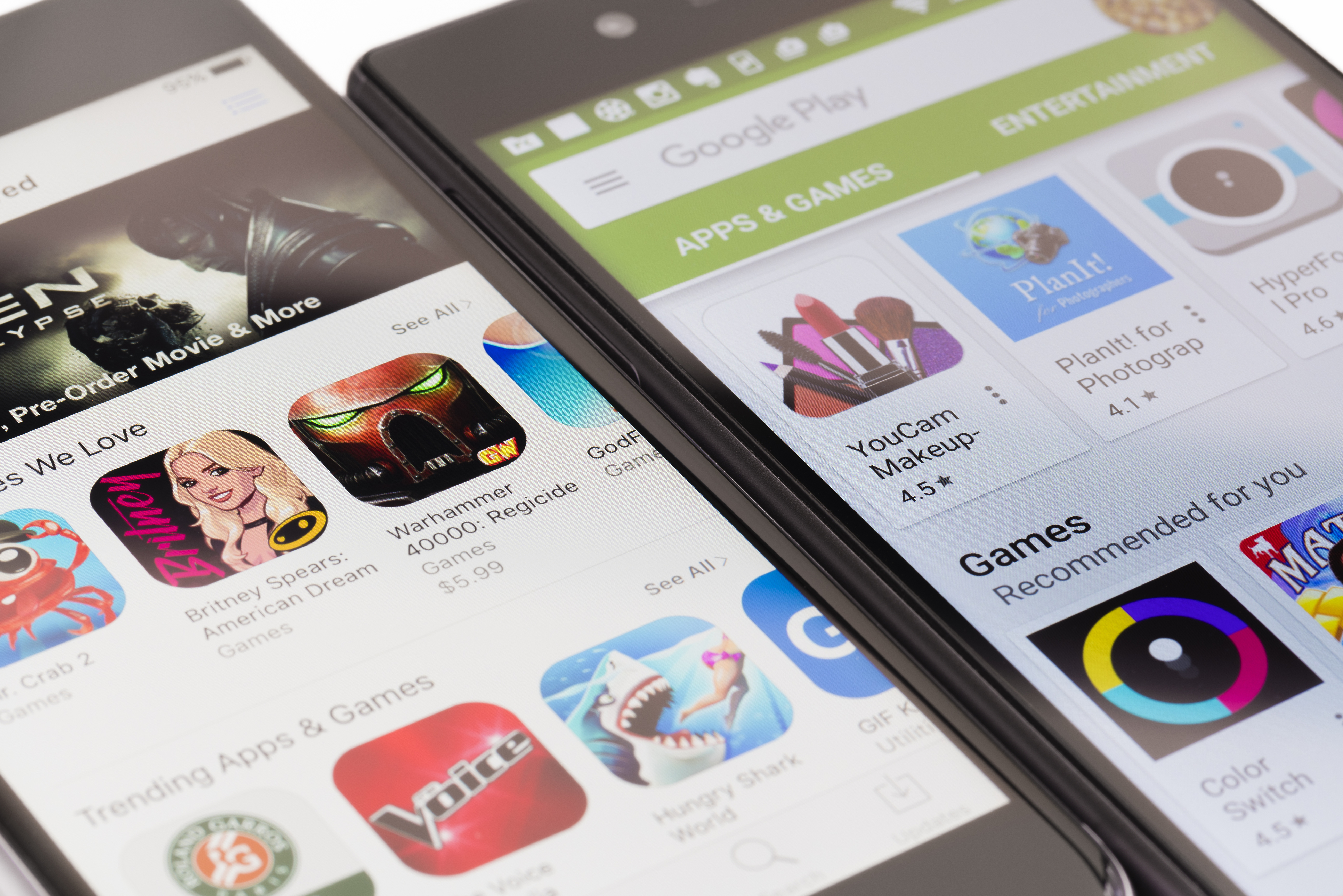It’s safe to say there are more app stores than I realized...
That’s probably because as a self-reported Apple addict, I’ve never had to use another app marketplace to hunt for the best iOS apps.
How many app stores are there?
Between native app stores and other third-party options, there are over 25 app stores available on smart devices like phones, tablets, smart TVs, and even smart appliances.
Here’s a quick overview of what we will cover in this list.
- Top app stores
- Other native app stores
- Apple App Store alternatives
- Google Play Store alternatives
- Cross-platform app stores
Most popular app stores
Obviously, it makes sense that the top app stores are mostly native, or built-in, to the devices and their mobile operating systems. These app stores are a trusted, convenient source for the latest mobile applications. Between the top two app stores, there are roughly 5 million apps. So, while it’s a great place to reach a large audience, that’s a lot of competition – which is why some developers publish their apps to third-party stores as well. We’ll also cover alternative app stores for both Android and iOS users.
Google Play Store
The Google Play Store is the official app store for devices that run on Android OS. On top of apps, there’s a variety of digital media available for download like music, books, movies, and TV shows. The Google marketplace no doubt has a great search function for consumers, however, some developers complain that because there is so much content on the store, their app gets lost. This isn’t to say that you shouldn’t list your app on the Google Play Store. If you build an app for the Android OS, it’s a must. But you may want to consider other third-party stores as well.

Google Play Store Fees
There are fees associated with uploading your app to the Google Play Store. There is a one-time publishing fee of $25. The Google Play Store also has a 30% transactional fee on all purchases, and after the first year, the subscription fee falls to 15%.
Vous voulez en savoir plus sur Outils SEO ? Découvrez les produits Outils SEO.
App Store
The App Store is the official marketplace built into Apple products that run on iOS. In the last few years, Apple has cracked down on the quality of their apps. They have notoriously strict requirements for apps published on their platform. If you build an iOS app, you should absolutely list it on the App Store as there are no real Apple marketplace alternatives.

App Store Fees
Developers have a few monetization options, including free, free with in-app purchases, and paid. When your app is submitted to the App Store, Apple has a $99 per year fee, plus a 15% transactional fee on all purchases.
Amazon Appstore
The Amazon Appstore is an alternative app store for Android devices. The app store hosts Android apps and actually comes pre-installed on Amazon devices like the Fire Phone and Kindle Fire. If we know anything about Amazon, it’s that they are successful in every arena they enter, and it’s not different here.

Amazon Appstore Fees
There are no initial or yearly fees when you upload an app to the Amazon Appstore. However, there is a 30% transactional fee on all purchases, including paid apps and in-app purchases. The Amazon Appstore also has its own virtual currency called “Amazon Coins.”
|
As you can see, each app store has different fees and guidelines. If you want to learn more about other hidden fees associated with the cost of an app, check out this guide. |
Other native app stores
While Android and iOS own nearly 99% of the market share in the U.S., there are other app stores out there. A lot of different manufacturers build devices that run on Android – but a few of them also have their own app stores. Because fewer apps are listed on these marketplaces, discoverability goes way up.
Samsung Galaxy Store
Samsung Galaxy Store is an app store that is automatically uploaded to Samsung Galaxy devices. This marketplace is available on the Android, Tizen, Windows, and Bada platforms. It offers native apps like Samsung Gallery, Music, and Calculator, as well as third-party apps.
Microsoft Store
The Microsoft Store is the official app store for the Windows Phone. Formally known as the Windows Phone Store and Windows Store, this marketplace has been merged with other Microsoft offerings including the Xbox stores. Similar to the Google Play Store, the Microsoft Store distributes apps, videos, music, and games.
Huawei App Store
The Huawei App Store is primarily used in the Chinese market. It is downloaded on a number of Huawei devices. Plus, it’s accessible in countries where the Google Play Store is not.
LG SmartWorld
The Lg SmartWorld market is a similar app store that comes preloaded on LG phones, plus it includes apps for LG TVs and their other devices as well.
BlackBerry World
BlackBerry World, formally knows as BlackBerry App World, is the official app store for BlackBerry devices. As you can imagine, there are not that many BlackBerrys out in the wild anymore, plus the ones that are most likely run on Android. However, in its heyday, it had the largest revenue per app – more than the App Store and Google Play Store combined in 2015.
Sony Apps
Sony Apps is another native app store for, you guessed it, Sony mobile devices. This marketplace is geared toward entertainment apps, but also includes a variety of other resources for users.
App Store alternatives
I know I said before that there were no other app stores available for iOS devices. I lied, sort of. In order to use an App Store alternative on your iPhone, you have to jailbreak it.
Cydia
Different than the other app stores listed here, Cydia only works on iOS devices that have been jailbroken – or altered to remove all of Apple’s restrictions. Because of this, the App Store doesn’t work on such devices.
Google Play Store alternatives
While the Google Play Store is the official marketplaces, there are alternative Android app stores as well.
Aptoide
The Aptoide market is a third-party app store for Android devices. It lists apps a little differently than other app stores and is easy to navigate.
F-Droid
F-Droid gives consumers access to free and open-source apps on Android. It’s a very attractive Google Play Store alternative for developers that want their app to reach as many users as possible. However, it’s not the best options for brands as the marketplace flags any commercialized aspects of the app.
AppBrain
AppBrain offers brands promotional tools to help boost their discoverability in their app store and others as well. Different from most other app stores, the marketplace is browser-based.
SlideME
The SlideME app store offers free and paid Android apps from developers worldwide. This Google Play Store alternative is one of the most popular for both developers and consumers alike.
1Mobile
1Mobile focuses on game and entertainment apps, even featuring a “game of the week” which makes it a great option for developers that are struggling to get downloads on oversaturated marketplaces.
Cross-Platform app stores
Cross-platform apps are developed for multiple platforms and can be thought of as retrofit options.
GetJar
GetJar hosts a ton of apps – let’s just say many of them wouldn’t necessarily pass the native app store guidelines. This flexible app store has almost 400,000 registered developers.
NexVa
The NexVa app store is built for multiple platforms and listings feature a description, rating, screenshots, and more just like native app stores. It’s built for developers who want to target specific verticals.
Submit, launch, repeat
As you can see, there are a lot of options out there for app developers. It’s important to understand how these alternative marketplaces can help you get your app in the hands of as many people as possible.
Now you may be thinking “how do app store rankings work?” We’re glad you asked! Learn more about app store optimization and how you can move up the charts.

Bridget Poetker
Bridget Poetker is a former content team lead at G2. Born and raised in Chicagoland, she graduated from U of I. In her free time, you'll find Bridget in the bleachers at Wrigley Field or posted up at the nearest rooftop patio. (she/her/hers)
